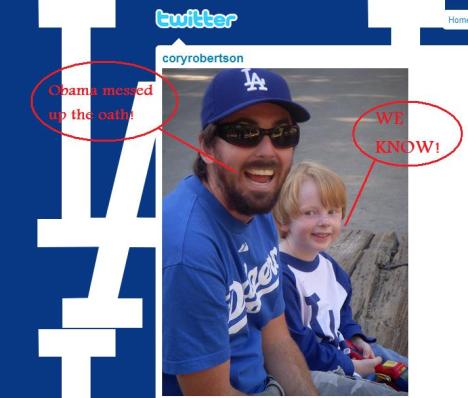Every time a new social networking is born, the Educational Technology field jumps in to rescue the newborn from the clutches of careless parents, and do their best to nurse as one of their own, without first requesting a paternity test to truly find out if it belongs to them. Okay, it’s not the most perfect metaphor, but it gets the job done. I’ve stated it before, so I won’t go into too much detail (Our Students Are Not Beta Testers), but I’m generally cautious when it comes to grabbing the newest in tech, and then throwing it into the classroom.
The newest communication tool that seemed to be free of any downside, is Twitter. I use it on a regular basis (posting on everything from education, to politics, to the Dodgers), and see the very real value in having that open pipeline of quality input, from people *I* choose to follow. But, lately, I’ve noticed a few fissures in the newborn’s skull (okay, I will stop now with that metaphor).
When the US Airways Flight 1549 crashed into the Hudson River, I knew about it instantly. I also knew about it 3 seconds after that. I knew about it, again, 4 minutes later. And, finally, I knew about it 10 times over for the next 5 minutes. Why did I choose to hear this piece of breaking news as a startling announcement 15 separate times? I didn’t. Twitter sent me many, many, MANY notices that the flight had crashed.

That’s because Twitter was originally intended as an outlet for those who feel they have something to offer, but neither the longevity nor the depth of content to fill up a daily blog post (notice that I say it was “intended” for that, and it doesn’t necessarily reflect the actual users; additionally, I don’t post on my blog daily, so I’m not in a glass house). So, when someone sees something interesting or shocking, or genuinely newsworthy, they instantly go to Twitter, where they can post a 140-character blurb on it, rather than having to truly tax their brain to form sentences, and paragraphs, and main ideas with supporting details.
So, why is it a big deal that I received so many notices about the Hudson River crash? Well, if the open information society prides itself on being lean, efficient, and informational, how can you honestly look to Twitter as a quality source, when it allows for such a high level of redundancy?
Imagine looking up the word “Vesuvius” in an encyclopedia, and finding its definition, followed by a “See: vesuvius,” which leads you to another definition (this one with a “RT:@vesuvius” before it), which has “Also: vesuvius, pg. 336,” which takes you to yet another definition (this one with a “RT:@vesuviusRT:@vesuvius”)? Not a perfect analogy (I already demonstrated my worthlessness with metaphors today, why not add analogies to the list), but it does beg the question: Is redundancy the pitfall in the future of an EduTwitter?
Filed under: Uncategorized | Tagged: badmetaphors, twitter, vesuvius | Leave a comment »


